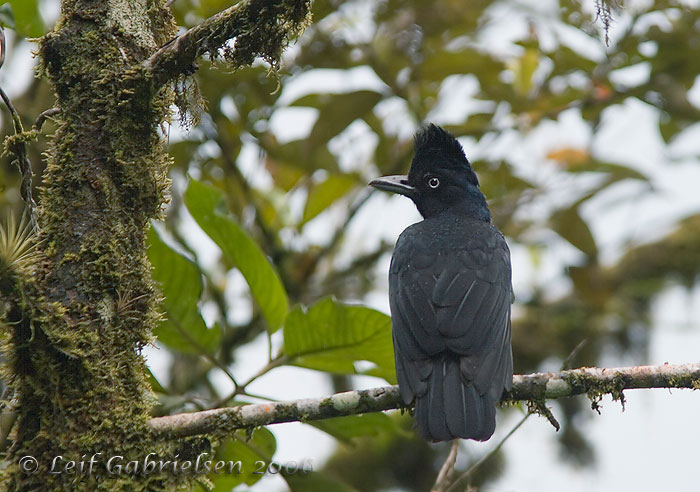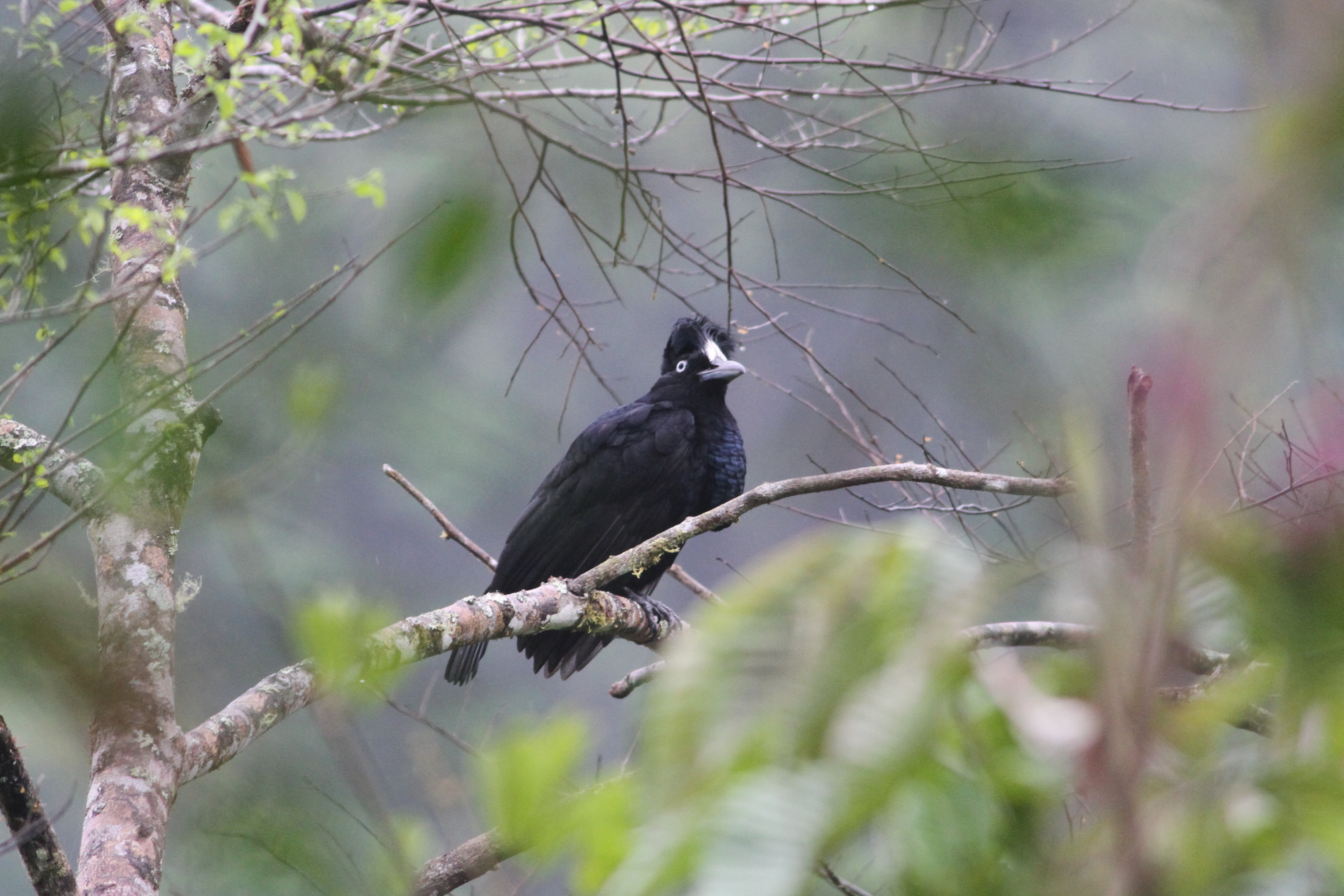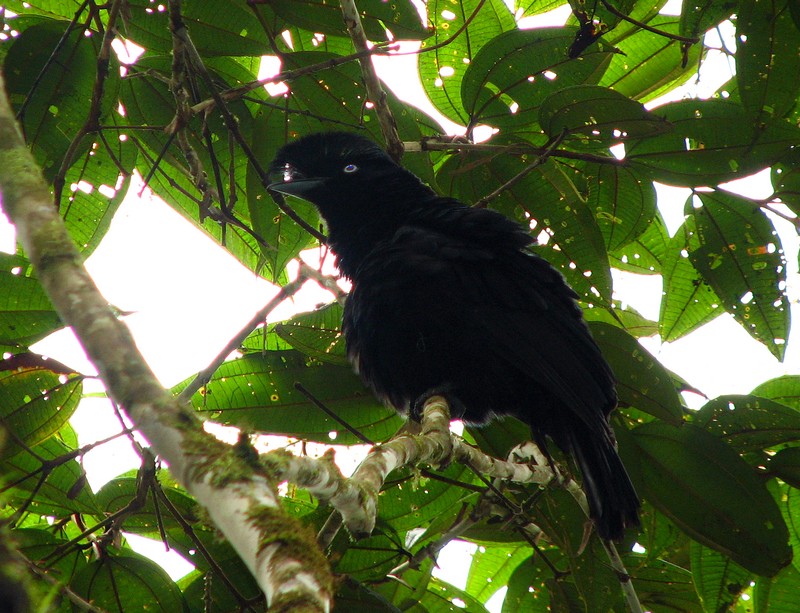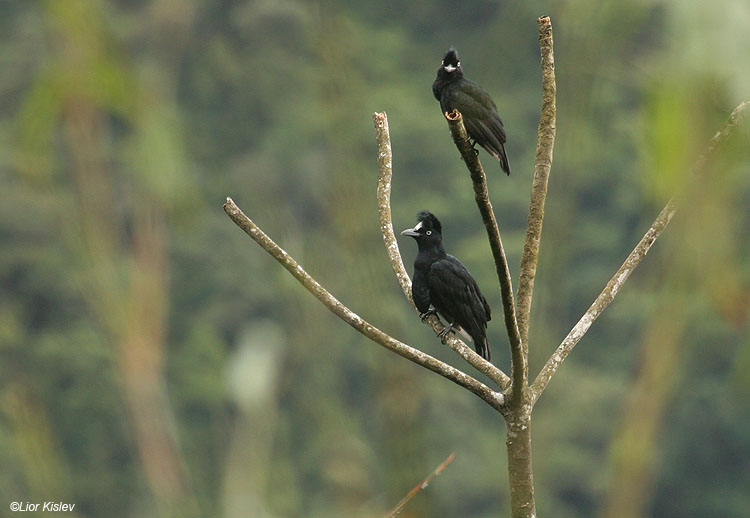
Cephalopterus ornatus
TAXONOMY
Cephalopterus ornatus Geoffroy Saint-Hilaire, 1809.
OTHER COMMON NAMES
English: Fifebird, bullbird; French: Coracine ornйe; German:
Kurzlappen-Schirmvogel; Spanish: Pбjaro Paraguas.
PHYSICAL CHARACTERISTICS
Umbrellabirds have sharp and powerful claws to secure good
grips on branches during calling. This group comprises the
largest of the cotingas, being about the size of a crow. As is
the case with most cotingas, the females are smaller and less
dramatic than the males in terms of ornamentation. For example,
the male Amazonian umbrellabird is 1.65 times the
weight of females, with male weights ranging 1.5–1.6 lb
(680–745 g). Both sexes are entirely black, and the male has a
whitish eye.
DISTRIBUTION
This species is found in the western and central Amazonian
basin, at lower elevations typically not exceeding 4,300 ft
(1,300 m).
HABITAT
This species tends to be a riverine island specialist in the Amazonian
lowlands, often associated with riverine vegetation (e.g.,
Cecropia). However, along the eastern fringe of the Andes, this
species ranges up into montane evergreen forest, more similar
to the primary habitat of the other species of umbrellabirds.
BEHAVIOR
Unlike the other two species of umbrellabirds, the Amazonian
species appears to be sedentary. The call is a plaintive combination
between a “roar” and bleating calf, often occurring in the
morning or afternoon. Umbrellabirds have a very characteristic
slow-flapping during flight with the crest laying down flat.
Once perched they will often hop clumsily from branch to
branch. Animal prey is often beaten against a tree branch before
swallowing
FEEDING ECOLOGY AND DIET
The umbrellabirds consume fruits such as berries and palm
fruits and nuts. Larger seeds of the fruits they consume are regurgitated.
This helps regenerate the tropical forests they live
in, as seeds of their preferred food plants are dispersed
throughout the forests. Insects, larvae and some spiders are
taken as well. Animal matter is consumed especially during the
rainy season when fruits are more scarce.
REPRODUCTIVE BIOLOGY
Males are organized into widely spaced, exploded leks and may
displace other males from calling perches.
The nest is platform type and built very roughly of loose
twigs such that the single egg or chick can be seen from underneath.
The nest is often located high in a tree fork. The
single egg is 2.2 by 1.4 in (56 by 36 mm), oblong and rather
pointed at one end, with khaki coloring with brownish spotting
and stippling.
CONSERVATION STATUS
Not threatened.
SIGNIFICANCE TO HUMANS
The head and beard ornamention are sometimes seen in Amazonian
riverboats, but the associated belief is unknown. However,
various tribes use the wattles for ornamentation in their
artifacts.
Other popular Animals
Photo Gallery of - Amazonian umbrellabird




 Animalia Life
Animalia Life